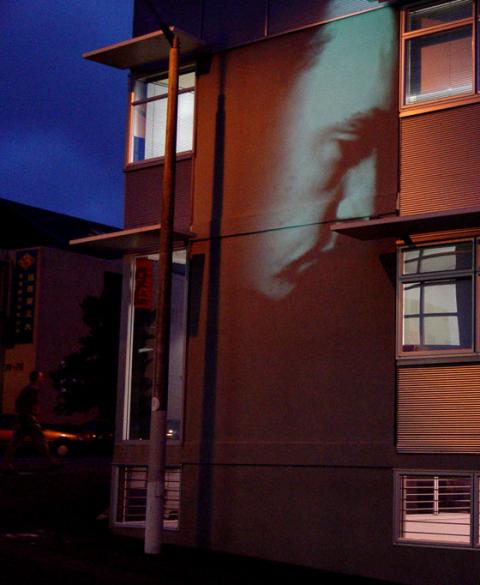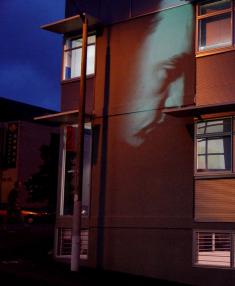Auckland
Gateway to the Pacific
In Auckland, it is impossible to view the Pacific in the context of a kind of timeless past. The site of a rich Maori-European, post-colonial culture and home to various Pacific, Southeast Asian and European diasporas, the city has become one of the most vibrant cultural production zones on the globe. Auckland’s second biennial art fair, the Aukland Art Fair 2007, offers a unique opportunity to taste this dynamism and experience for what it is—as a gateway to the Pacific.
Artist Ani O’Neill is of Maori and Cook Islands descent, and makes objects and installations using South Pacific Island craft skills that have been passed down to her from her Cook Islands grandmother. These techniques include the creation of traditional costumes for celebration as well as tivaevae (quilt making), embroidery, sewing and crochet, which have all been adapted from the colonial teachings of the missionary wives by the women of the Cook Islands and the greater Pacific.
O’Neill’s craft of crochet becomes a vehicle for shared memory and storytelling. For instance, during a residency at Art In General in New York in 2004, O’Neill created The Buddy System based on a crocheting workshop in which visitors to the gallery space were assisted in crocheting a simple, wool flower. Each participant’s contribution added on to the installation, as part of a growing vine. At the end of the exhibition, the vine was dismantled and the individual pieces sent to a friend or family member chosen by the participant.
O’Neill’s work, Lucky Dip 6, is of the same genre and, as such, is part of an open-ended series. Artist O’Neill has said that the work “involved me reaching into a sack with all my different wools and pulling out two at random.” The works reference craft and country fairs, birthday parties and the recycling ethos and random aesthetics of many home crafts. O’Neill’s archipelagos of crochet circles are reminiscent of brightly colored atolls dotting an ocean, playful spores blooming across pale gelatin film or droplets of dye staining a blank page. They allow us to think about distance, viral connection and happenstance.
Judy Darragh’s work exhibits similarly flamboyant excess. Her works are derived from her predilection for the kitsch aesthetic of two-dollar store cheap imports and contemporary day-glow materials, which she makes pass through a sunset-hued and frangipani-scented filter. These eclectic and seemingly chaotic assemblages of hand-made and found objects borrow much from New Zealand’s rural and urban neighborhood traditions of community fairs, weekend Pacific produce markets—from the rows of gaudy prizes at traveling circus fairs and A&P Shows where handcrafts and cake stalls sit alongside prize cattle, sheep pens, pony rides and giant vegetables.
In Arts Society the artist mirrors a community fundraising stall with a circle of trestle tables overflowing with joyfully painted and encrusted, rescued ready-mades, strings of homecraft paper beads, woolen webs, crowds of polystyrene snowmen and fanned vinyl records, all of which echo a Sonia Delaunay painting or even a Judy Chicago dinner setting gone awry. Elements of Arts Society have been used in previous installations and will be used again, including work to be seen at the Auckland Art Fair.
O’Neill and Darragh’s art practices share an interest in the possibilities for exchange and community building that form around the concept of the trading table. Theirs is a world of connections, but it is a world cognizant of the distances, both physical and value-laden, that separate us from one another in the context of our trade-driven society.
Niue-born John Pule explores the misunderstandings of such distances. Migrating to Auckland at the age of two in 1964, Pule’s work asks paradoxical questions about contemporary European New Zealand life and traditional Niuean culture through the experiences of cultural and physical dislocation. He sees himself as an outsider to both cultures. Thus, his stories of alienation and belonging are stories of how the savage Other resides in each one of us.
Pule’s recent canvases are populated by grass-green cloud shapes carrying pockets of visual narrative. The vines of the ti mata alea (Cordyline Tree) are a recurring motif. In Niuean culture, this plant is believed to be the source from which human life originated. Thus, this imagery holds great meaning for Pule, whose family brought native Niuean plants with them to New Zealand to set in the soil of their new home, a common practice by natives of the Pacific cultures.
This attempt to find anchorage in a new place can similarly be experienced in his paintings, yet this aspect simultaneously represents his works’ fundamental failure. The green clouds in recent work hover uncertainly. If they are islands, they are floating, without mooring, unstable. Perhaps, in a world increasingly aware of the dangers of global warming for dwellers of low-lying islands, and influenced by the forced migrations of global economies, the stains in Pule’s works, like hope bleeding away, remind us that the sandy shores of the Pacific can all too quickly become places of no return.
While showcasing the thoughtful and sophisticated contemporary art of New Zealand-based artists, the fair will also feature artists and site-specific installations by creators from further afield. Among these, Tony Oursler’s brand of low-tech, expressionistic video theater will make its appearance in his Head Knocking, an installation in which a video of a man knocking his head against a hard surface will be projected on an outside wall. Originally shown at Madison Square Park in New York as one of four large-scale video projections accompanied by a sound piece under the title The Influence Machine, Head Knocking demands to be seen as part of a larger whole, and Auckland is a delightfully messy larger whole within which to be seen.
Auckland’s Viaduct Basin, where the art fair will encamp, is undergoing the sort of urban re-design that has become ubiquitous on city waterfronts around the world. In a state of flux, it is a fitting site especially given that Oursler’s cool, simple and haunting images are often at their best when they come into contact with the rough and disorganized real world. A recent proposal to build a huge sports stadium on Auckland’s downtown waterfront was thwarted by public outcry, so the re-staging of Oursler’s image of a man knocking his head against a hard surface is truly set to give rise to some rich local associations.
Previously published in "Art Fairs International," 7 May 2007

